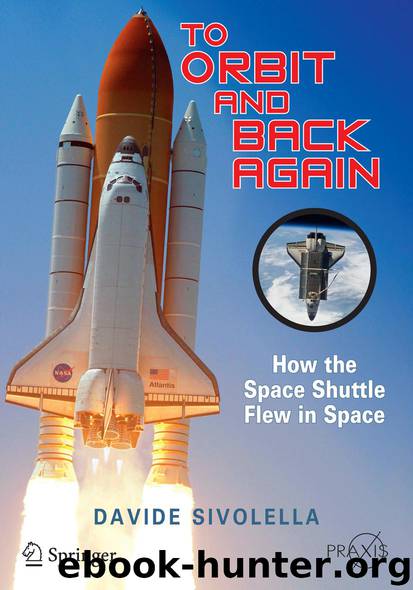To Orbit and Back Again: How the Space Shuttle Flew in Space by Davide Sivolella

Author:Davide Sivolella
Language: eng
Format: mobi, epub
ISBN: 9781461409830
Publisher: Springer
Published: 2012-01-02T02:00:00+00:00
Cutting methodology for HRSI tiles.
Tile installation configuration.
This process was the methodology used by Lockheed in manufacturing all the thousands of tiles installed on each Orbiter for delivery to NASA. After each flight it was always necessary to replace tiles that had suffered damage. The manufacture of a specific tile was accomplished in a facility at the Kennedy Space Center. The same fabrication process was used, but on a much smaller production scale.
Originally NASA intended that all tiles should have the same shape, and differ in thickness depending upon the position on the Orbiter. In this way, the manufacturing process would be simple and fast and it would be possible to hold a stock of spare tiles. But it was soon realized that this would produce a faceted surface on the curved face of the Orbiter that would promote the onset of turbulence in the airflow with a higher rate of heating that would have necessitated thicker and hence heavier tiles. A better option was to machine every single tile to closely match the Orbiter’s contour. This meant each tile had to have a unique size and shape. As Emde explains, “The problem was that the structure had the outline of an airplane, but the requirements to keep the airplane cool would say that your thermal protection -depending on where you were on vehicle -had to be some thickness and some shape. The only thing that was common with the tile, was that the bottom was supposed to match the shape of the outside of the vehicle. The rest of the tile might be very thick in the nose and very thin at the top of the wing. It had its own contour based upon the aerothermal and thermal heating data. The key thing was that we had to design to keep the aluminum below 350 degrees. If you went over that temperature, it would weaken the structure for the design of 100 missions.” Having each tile only as thick as was necessary at that point on the vehicle minimized the weight of the thermal protection system, but the fact that every tile was unique added considerably to the workload and hence to the turnaround costs. It was simpler to manufacture replacement tiles as necessary than to keep a stock of spares.
Tile installation configuration
Along with a manufacturing methodology for the tiles, it was necessary to develop a means of bonding them to the structure of the Orbiter. The difficulties encountered in researching this problem resulted in an important change in the tile manufacturing process.
Owing to their extremely high temperature resistance and low density, tiles are most useful for a spacecraft where protection and weight are critical factors. But as Emde explains, “The aluminum structure stretched a lot during re-entry… If you just bonded the tile to the structure, the tile virtually has no thermal expansion at all.
You can heat it all over the place, it doesn’t go anywhere… It would just shear itself off.” Hence an intermediate layer called a strain
Download
To Orbit and Back Again: How the Space Shuttle Flew in Space by Davide Sivolella.epub
This site does not store any files on its server. We only index and link to content provided by other sites. Please contact the content providers to delete copyright contents if any and email us, we'll remove relevant links or contents immediately.
| Aeronautics & Astronautics | Astronomy |
| Astrophysics & Space Science | Comets, Meteors & Asteroids |
| Cosmology | Mars |
| Solar System | Star-Gazing |
| Telescopes | UFOs |
Tools of Titans by Timothy Ferriss(8218)
Turbulence by E. J. Noyes(7936)
Secrets of Antigravity Propulsion: Tesla, UFOs, and Classified Aerospace Technology by Ph.D. Paul A. Laviolette(5309)
Astrophysics for People in a Hurry by Neil DeGrasse Tyson(5130)
Room 212 by Kate Stewart(5035)
Design of Trajectory Optimization Approach for Space Maneuver Vehicle Skip Entry Problems by Runqi Chai & Al Savvaris & Antonios Tsourdos & Senchun Chai(5011)
Pale Blue Dot by Carl Sagan(4912)
The David Icke Guide to the Global Conspiracy (and how to end it) by David Icke(4625)
A Journey Through Divination and Astronomy by Publishing Pottermore(4344)
Goodbye Paradise(3727)
Apollo 8 by Jeffrey Kluger(3637)
COSMOS by Carl Sagan(3554)
Losing the Nobel Prize by Brian Keating(3498)
The Five People You Meet in Heaven by Mitch Albom(3475)
How to Read Water: Clues and Patterns from Puddles to the Sea (Natural Navigation) by Tristan Gooley(3406)
Brief Answers to the Big Questions by Stephen Hawking(3369)
How to Read Nature by Tristan Gooley(3249)
The Order of Time by Carlo Rovelli(3145)
A Brief History of Time by Stephen Hawking(2960)
